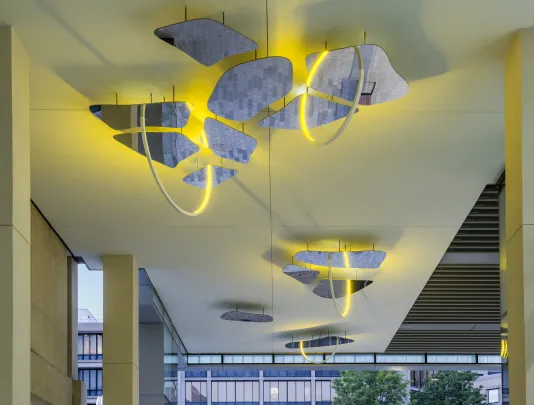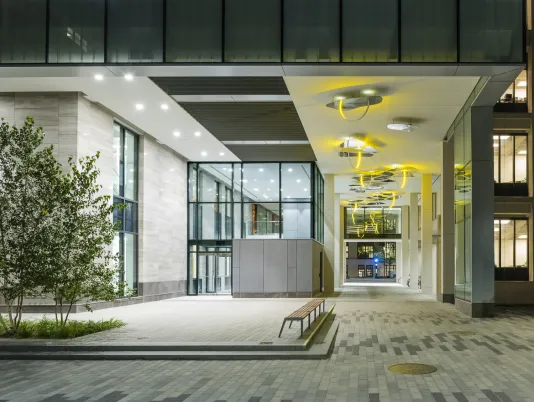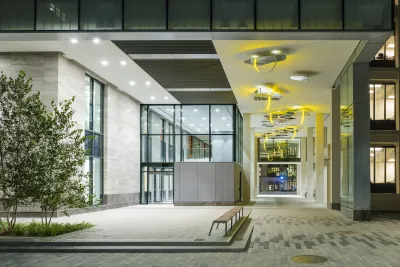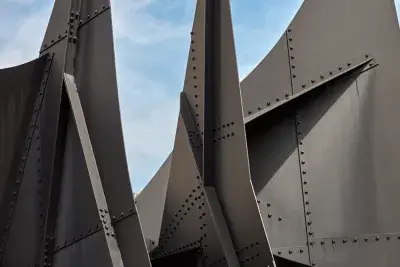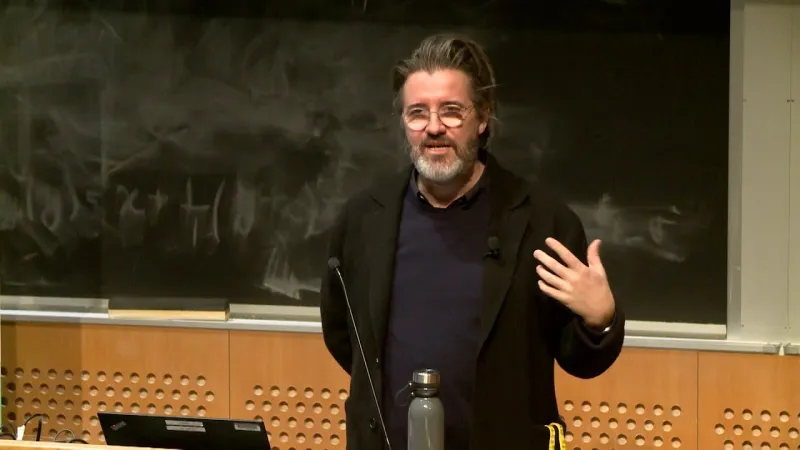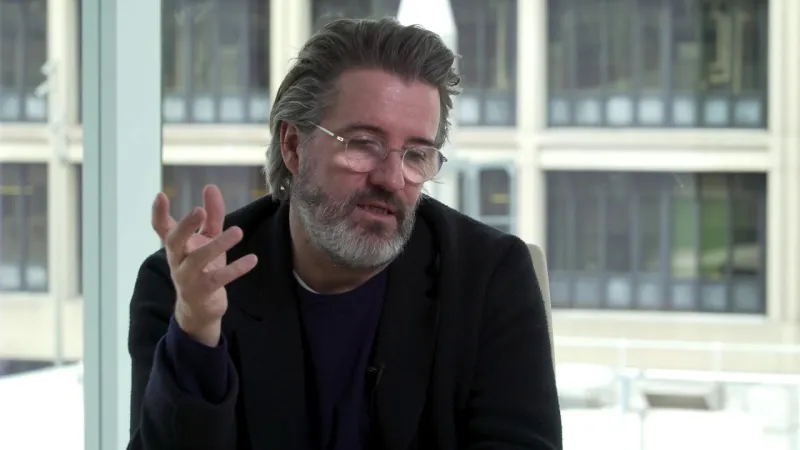Olafur Eliasson, Northwest Passage, 2018. MIT Percent-for-Art Commission for MIT.nano. Photo by Anton Grassl.
Northwest Passage, 2018

Northwest Passage, a site-specific installation by Olafur Eliasson, is situated in the breezeway of Lisa T. Su Building (formally MIT.nano), a building dedicated to nanoscience and nanotechnology.
Across a span of 123 feet, half-rings of yellow LED lights hang from, and are reflected in, clusters of polished stainless-steel panels that are attached to the ceiling. The abstract rounded forms of the panels, which vary in size, are based on the silhouettes and configurations of free-floating ice found in the Parry Channel of the Northwest Passage between North America and the Arctic Circle, a historically impassable frozen route linking the Pacific to the Atlantic through the Arctic Ocean. As of the summer of 2007, climate change accelerated the thinning of its ice such that vessels have been able to sail the passage without requiring an icebreaker, an event that scientists predict will become more and more common with the continued effects of global warming. This development is both a byproduct of global industry and a driver of intercontinental freight shipping, which further contributes to climate change.
Eliasson’s installation addresses this phenomenon at a far smaller scale. Humans and their movements through this passageway are reflected in the work, perhaps implicated as part of this consequential change, which will cause rising tides and eventually impact cities like Cambridge. The mirrored surfaces at times complete the suspended half-circles of light, which might read as setting suns, and at times fragment the reflected forms, suggesting disrupted routes or broken cycles. These optical illusions ask viewers to consider the impact of their physical position on what they see.
Olafur Eliasson (b. 1967) was born in Copenhagen, Denmark. Eliasson’s work in sculpture, painting, photography, film, and installation has been exhibited throughout the world. In addition to creating works for museum and gallery settings, he engages the broader public through architectural projects and interventions in civic spaces. In 1995, the artist founded Studio Olafur Eliasson, a Berlin-based think tank, to expand and leverage multi-disciplinary conceptualization and planning for future projects. Members in the studio include craftsmen, specialized technicians, architects, archivists, administrators, programmers, art historians, and cooks. In 2014, Eliasson was awarded MIT’s Eugene McDermott Award in recognition of his influential art practice and its broader significance in the public sphere. Eliasson lives and works in Copenhagen and Berlin.
